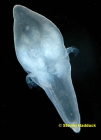Deep-Sea taxon details
Tetraplatiidae Collins et al., 2008
394119 (urn:lsid:marinespecies.org:taxname:394119)
accepted
Family
- Genus Tetraplatia Busch, 1851
marine, brackish, fresh, terrestrial
recent only
Collins, A. G., Bentlage, B., Alberto Lindner, A., Lindsay, D., Haddock, S.H. D., Jarms, G., Norenburg, J. L., Jankowski, T., & Paulyn Cartwright, P. (2008) Phylogenetics of Trachylina (Cnidaria: Hydrozoa) with new insights on the evolution of some problematical taxa. Journal of the Marine Biological Association of the United Kingdom 88(8): 1673-1685., available online at https://doi.org/10.1017/S0025315408001732
page(s): 11 [details]
page(s): 11 [details]
Schuchert, P. (2024). World Hydrozoa Database. Tetraplatiidae Collins et al., 2008. Accessed through: Glover, A.G.; Higgs, N.; Horton, T. (2024) World Register of Deep-Sea species (WoRDSS) at: https://www.marinespecies.org/deepsea/aphia.php?p=taxdetails&id=394119 on 2025-04-03
Glover, A.G.; Higgs, N.; Horton, T. (2025). World Register of Deep-Sea species (WoRDSS). Tetraplatiidae Collins et al., 2008. Accessed at: https://www.marinespecies.org/Deepsea/aphia.php?p=taxdetails&id=394119 on 2025-04-03
Date
action
by
original description
Collins, A. G., Bentlage, B., Alberto Lindner, A., Lindsay, D., Haddock, S.H. D., Jarms, G., Norenburg, J. L., Jankowski, T., & Paulyn Cartwright, P. (2008) Phylogenetics of Trachylina (Cnidaria: Hydrozoa) with new insights on the evolution of some problematical taxa. Journal of the Marine Biological Association of the United Kingdom 88(8): 1673-1685., available online at https://doi.org/10.1017/S0025315408001732
page(s): 11 [details]
context source (Hexacorallia) Fautin, Daphne G. (2013). Hexacorallians of the World. (look up in IMIS) [details]
page(s): 11 [details]
context source (Hexacorallia) Fautin, Daphne G. (2013). Hexacorallians of the World. (look up in IMIS) [details]
From editor or global species database
Diagnosis Narcomedusae without bell, worm-like, body divided by groove into aboral and oral halves, along groove four marginal lappets used for swimming. Aboral and oral portion of body mayor may not be connected by four flying buttresses alternating with marginal lappets. Eight sense organs in marginal lappets. No tentacles. Four epidermal gonads each with paired aboral and oral lobes. [details]
| Language | Name | |
|---|---|---|
| Japanese | プラヌラクラゲ科 | [details] |

